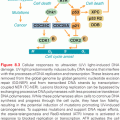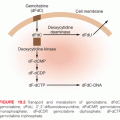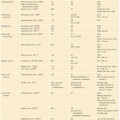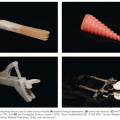CANCER INCIDENCE AND MORTALITY
In this chapter, we describe and discuss cancer trends for the time period 1990 through 2010 using cancer incidence data from the SEER-9 registry (Table 12.2 and Fig. 12.1) and US cancer mortality data from the National Center for Health Statistics (Table 12.3).4,5 All rates were age-adjusted to the US 2000 standard population by the direct method, using 10-year age intervals.
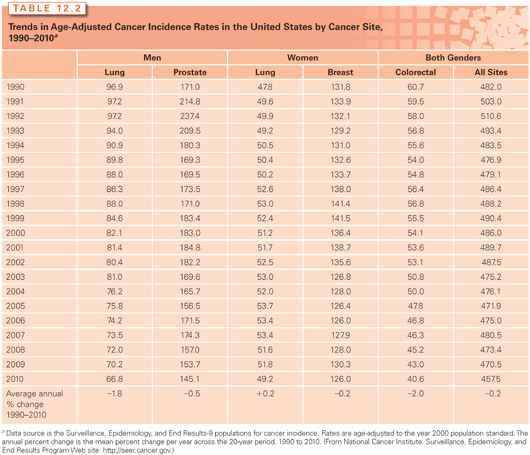
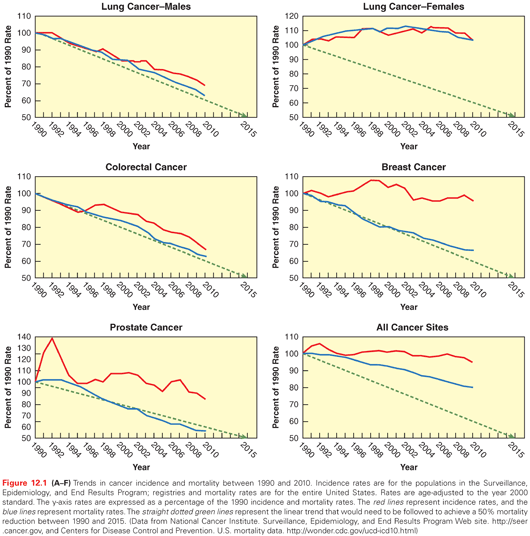
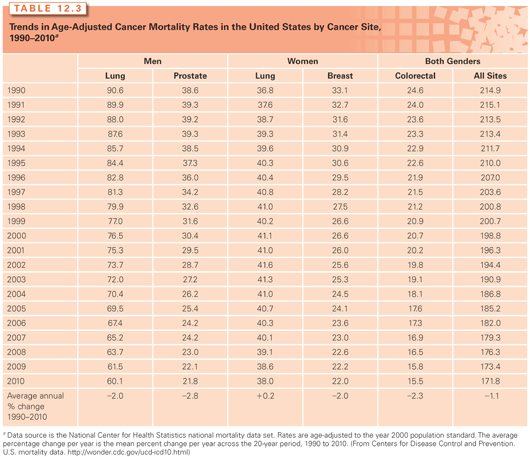
Lung Cancer
The lung is the second leading site for cancer incidence and the leading site for cancer death among both men and women in the United States.6 There are now more deaths from lung cancer in the United States than from the sum of colorectal, breast, and prostate cancers. Trends in lung cancer incidence and mortality have been nearly identical because there are few effective treatments for lung cancer, and survival time remains short. Lung cancer trends follow historic declines in tobacco use, lagged by about 20 years.13 Between 1965 and 1985, tobacco use among US adults dropped substantially, and more in men than in women. Lung cancer mortality rates began to decline among men in 1990, but rates increased among women throughout the 1990s. The stabilization of lung cancer incidence trends among women from 2000 to 2005 and the beginning of a decline in the period 2005 to 2010 foretells a coming persistent decline in lung cancer mortality among women in the United States.
The effectiveness of annual examinations by use of chest radiographs in reducing lung cancer mortality was studied as part of the Prostate, Lung, Colorectal, Ovary (PLCO) trial, and the effectiveness of annual screening by low-dose computed tomography (LDCT) of the lung fields was studied in the National Lung Screening Trial (NLST).14,15 In brief, screening with standard chest radiography finds more cancers earlier but does not affect mortality, whereas screening with LDCT reduces the risk of death from lung cancer by at least 20%.14,15 Therefore, both the ACS and the US Preventive Services Task Force have issued recommendations that favor informed decision making for lung cancer screening using LDCT.16,17
The major factor that will determine lung cancer incidence in the coming decade is the past history of tobacco use, but future screening will also reduce future mortality rates. Considering all factors, it is likely that over the coming decade the downward trends in mortality from lung cancer will continue at about the same rate among men, and soon will become more apparent among women.
Colorectal Cancer
The colorectum is the third leading site for cancer incidence and the second leading site for cancer death in the United States.6 Colorectal cancer incidence rates increased until 1985, when they began to decline. The reasons for this decline are not clear, but could be related to downward trends in cigarette smoking and the increasing use of both nonsteroidal anti-inflammatory drugs (NSAIDs) and HRT.18 The rapid decline in HRT use following the publication of the Women’s Health Initiative trial results in 2002 may adversely affect colorectal trends among women in the coming years, because HRT reduces the risk for colorectal cancer among women.11 Recent trials have demonstrated the potential for NSAIDs to reduce colorectal neoplasia, but adverse effects from these agents will limit their widespread use for that explicit purpose. Nonetheless, even the common sporadic use of NSAIDs for other indications will contribute to continuing declines in colorectal cancer incidence in the coming years.
Screening with either sigmoidoscopy or colonoscopy leads to the identification and removal of adenomas, thus preventing the development of colorectal cancer.19,20 Medicare included coverage for all recommended colorectal screening methods in 2001, and national publicity has substantially increased public interest in screening.21 Colorectal screening rates have increased over time, now with about two-thirds of adults over age 50 reporting having ever been screened by lower gastrointestinal endoscopy (see Table 12.1).
Decreasing rates of colorectal cancer incidence are occurring in spite of the obesity epidemic, which is an adverse force on colorectal cancer risk, because obesity may account for as much as 20% of colorectal cancer in the United States.22 Recently, however, obesity trends have stabilized in the United States. 23 As a result of the increased use of lower gastrointestinal endoscopy for colorectal screening and this stabilization of obesity trends, the incidence of colorectal cancer may exceed the ACS goal for 2015 of a 25% reduction, and there is a high likelihood that the rate of decline in deaths from colorectal cancer will be steep enough to reach the 2015 ACS mortality reduction goal of 50%.
Breast Cancer
The breast is the leading site of cancer incidence and the second leading site for cancer death among women in the United States.6 Over the period 1990 to 2001, no substantial changes in incidence rates were observed, but after 2000, breast cancer incidence began to decline. The decline in breast cancer incidence observed after 2002 seems to have been the result of the sudden decline in the use of HRT following the 2002 publication of the Women’s Health Initiative results.10,11 It is likely that persisting lower rates of HRT use will cause a continued decline in breast cancer incidence in the coming years. Countering this favorable trend, however, are the adverse effects of the obesity epidemic. Obesity, a major risk factor for postmenopausal breast cancer, increased substantially between 1990 and 2005, now with over 25% of US women being obese. However, the slowing of the obesity epidemic since 2005 may have substantial beneficial effects on the future trends in breast cancer incidence.
After persistent increases in the use of mammography over a 20-year period, mammography rates declined modestly between 2000 and 2004, and then leveled off. The downgrading of the evidence recommendations by the US Preventive Services Task Force for mammography for women age 40 to 49 and recommendations for every other year mammographies for women age 50 and older have resulted in lower mammogram utilization, which is likely to continue into the coming decade.17 This trend will have an adverse effect on breast cancer mortality, but will tend to reduce breast cancer incidence somewhat because of a lack of detection of very early stage cancers.
The antiestrogens tamoxifen and raloxifene have both been shown to reduce the risk of incident breast cancer.24
Stay updated, free articles. Join our Telegram channel

Full access? Get Clinical Tree


